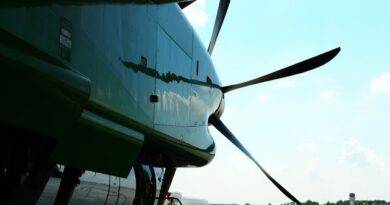Don’t Let the Plane Rest: The Mighty APU – Auxiliary Power Unit Explained
Ever wonder what hums and roars to life before a plane takes off? That workhorse behind the scenes is the Auxiliary Power Unit (APU). Let’s delve into this unsung hero of aviation!
What is an APU?
Imagine a mini jet engine tucked away in the aircraft’s tail (or sometimes elsewhere). That’s the APU, providing essential power when the main engines are off.

What Does an APU Do?
Think of the APU as a multi-talented helper:
- Starts the main engines: Provides compressed air to get those big engines roaring.
- Powers the cabin: Keeps the lights on, air conditioning flowing, and entertainment systems buzzing.
- Ground operations: Enables air conditioning, lighting, and electrical systems while parked, saving fuel and reducing reliance on ground equipment.
Key Benefits of the APU
- Passenger comfort: Maintains a pleasant cabin environment on the ground, especially in hot climates.
- Faster turnaround times: Allows quicker boarding and deplaning as the cabin is already prepped.
- Reduced costs: Saves fuel compared to using ground equipment for air conditioning and starting.
- Environmental benefits: Lower emissions compared to using ground power units (GPUs).
So, next time you hear that familiar hum before take-off, remember the hardworking APU keeping things comfortable and efficient behind the scenes!
References and Further Reading:
- Plane & Pilot Magazine: Understanding APUs: https://pilotinstitute.com/airplane-apu/
- HowStuffWorks: How Auxiliary Power Units Work: https://en.wikipedia.org/wiki/Auxiliary_power_unit
- YouTube video: Inside an Airplane APU: https://m.youtube.com/watch?v=xEDlMiFGleY
For more articles click.


